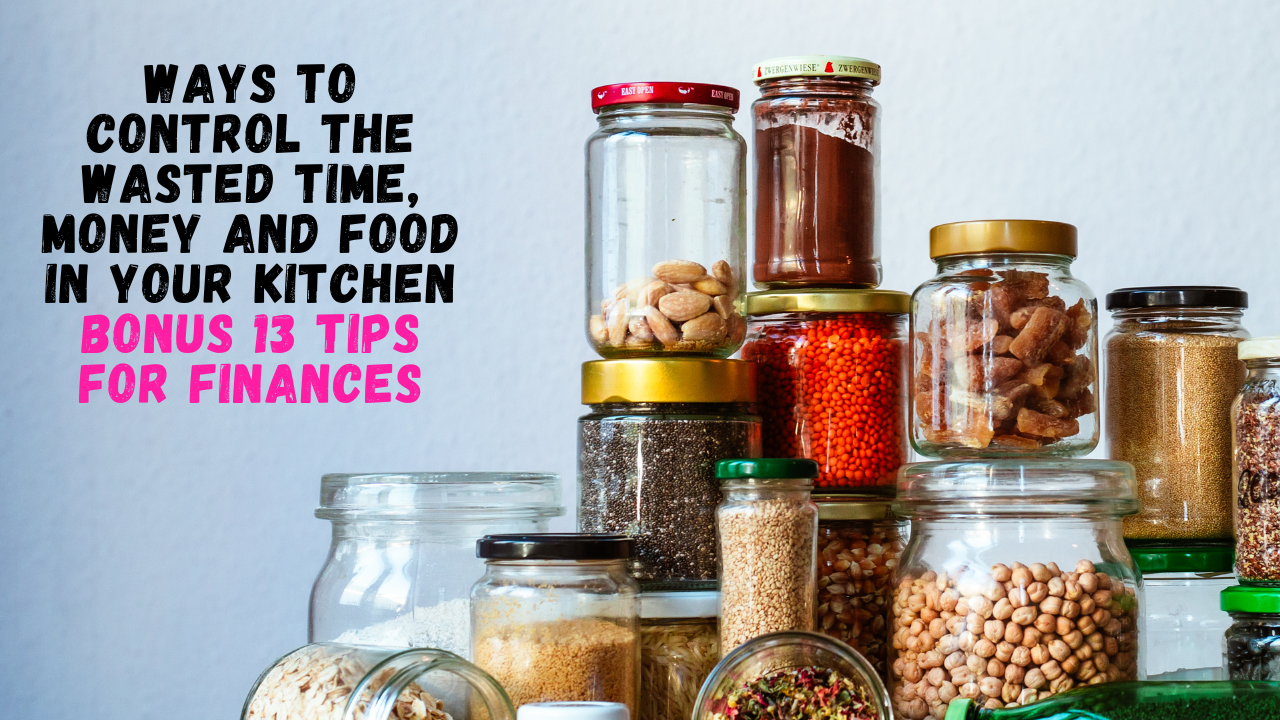Ways to Control the Wasted Time, Money and Food In Your Kitchen
Oct 30, 2025
Groceries are a huge source of waste. Wasted money, wasted food, and wasted time. Studies have shown that Aussies throw out 20% of their groceries without consuming them! Imagine how much fruit and vegetables were grown, harvested and shipped just to end up in the bin?
What if you could use that 20% instead, or spend less and eat the same?
Download and keep my infographic for 13 great tips to get your household budget trim and delicious! Below are a couple of my own suggestions and experiences over the years.
Don't forget to do a regular audit of your household grocery shops. What does your family like to eat and drink every week? These will be your staples. If you eat a block of sliced cheese a week (yay sliced smokey cheddar!) then it’s likely that you will always buy a pack of sliced smokey cheddar cheese. If hubby needs his cordial every week, then... you get the drift. (I may have forgotten this the other day... oops.) Tastes also change. Perhaps all the school snack options need a refresh, or you're bored of your normal pasta sauce. Take notes!
But those fancy buns that no-one liked because the seeds got stuck in their teeth and the kids don't like healthy food? Don’t add them to the list again! (Or freeze them so you can enjoy them when YOU want to and the kids can have bread with sneaky vitamins and minerals added!)
I recommend a staple pantry list that has core ingredients that can be the base of 4 or 5 different meals, so even when you have the urge to hit the take away joints, you have great reasons not to.
For example - mince can be tacos or spaghetti bolognaise or cottage pie or mince on toast! Savoury mince, koftas, keema mattar (curry mince with peas), meatloaf, meatballs... When you buy mince, you buy possibilities.
But when you buy Dino nuggets, they can only be turned into Dino nuggets and chips, nuggets and mash, or nuggets and Mac n cheese, none of which are health or wallet friendly. Occasional treats like this are fine - but not for every day meals.
We stick to a meal plan of foods that I know have approval from every one in the house. I make sure there's enough in the pantry, fridge and freezer so that we're organised, fed and happy, within my priorities and goals. I don't have to find new recipes, which means less random weird ingredients taking up space in my pantry, and that when we do cook something new, it's for fun and not desperation. And I'm prepared, so if there's leftovers of the new thing, I know to use it in the next few days, freeze it or to let it go from the beginning. Who hasn't been haunted by a jar of miso or gochujang and had no idea how long it lasts or what to do with it next?
Another great way to reduce shopping costs and waste is to plan for the food to go off, and do something about it before it happens. Like cutting up a heap of salads on the day after you do your grocery shopping. Or the day of shopping if you are feeling inspired! Creating your own salad bar is not only fun, it means you're more likely to make a yummy salad quickly and on the go. And you get to choose the ingredients, proportions and amount, plus family members can do the same.
If you know the fruit is getting a bit squishy, don't forget you can make a yummy and healthy stewed dessert and then just pop a little custard or yoghurt on top to make it really special. Stewed fruit is also great for breakfast on cereal or yoghurt.
You also have time to look for new recipes using the miso or the gochujang! Or find out how to store it appropriately.
When you have a ready made meal, or part of a meal in the fridge, being prepared reduces decision fatigue and you already know the answer to the most dreaded question of all time "What are we having for dinner?" Meal planning helps you to stand against the chorus of cries for junk food on the way home from sports ("it's already in the slow cooker/fridge/defrosted!") and will save you money.
Labelling food properly is key too. If you buy meat in plastic trays, I like to stack them in date order so the “what’s for dinner” is whatever meat tray is on top, with the soonest expiry date eaten first, and the longest expiry date eaten last.
If you have leftovers, use a see through container (where possible) and label with a date and description – especially if going in the freezer. UFOs can haunt your freezer just as much as weird old ingredients haunt your pantry. How many Unidentified Frozen Objects does your freezer hide? Not remembering what that blob of stuff in the freezer is a few months later could mean it should have gone in the bin straight away.
I’d love to know what other tips you have for saving money on groceries!
Jump into the Facebook group to learn more and share your thoughts.

Come and see what the facebook group is all about, get more tips and join in the conversation.
Stop wasting money today!
It's time to have more fun with your money.
The More Money Challenge allows you to:
- know where your money goes
- prioritise your spending
- have better conversations with your partner about money
Download the guide to get started now!
We hate SPAM. We will never sell your information, for any reason.
